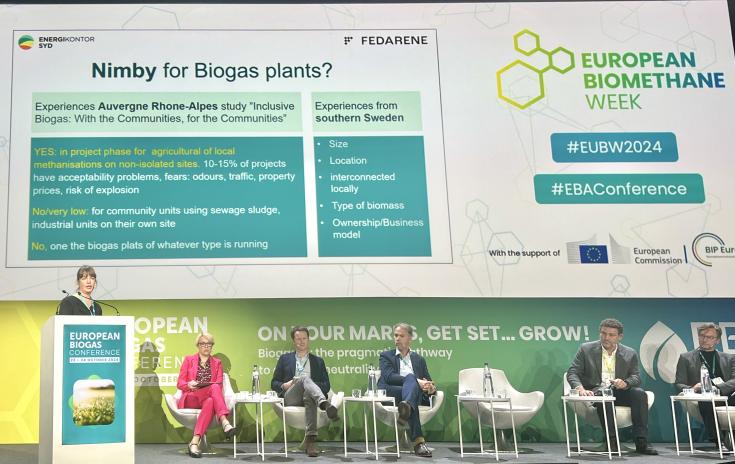Biogas and Hydrogen – a perfect match (SE)
The European Biomethane Week 2024, held in Brussels last month, gathered over 700 leaders, policymakers and stakeholders to explore the pivotal role of biogas and biomethane in Europe’s energy transition.
Energykontor Syd, partner of UNIFHY project, participated actively in the event, with Sabine Taeuber representing the agency at the panel session ‘Inclusive Biogas: With the Communities, for the Communities’. She provided valuable insights on the socio-economic and environmental impacts of biogas projects and emphasized the importance of transparent communication for achieving the community acceptance and, therefore, the project success.
An untapped potential
There is significant untapped potential in both biogas and renewable synthetic methane, known as e-methane, especially as the world shifts toward sustainable energy. E-methane, which is derived from green hydrogen, offers advantages over hydrogen, as it is easier to store, transport, and can seamlessly integrate with existing infrastructure used for biogas and natural gas.
Gasum, a Nordic energy company, aims to deliver 7 TWh of renewable biogas to the market each year by 2027. This ambitious target will be met through investments in new biogas plants and partnerships with reliable European producers. In Kalmar County, a 250 GWh biogas plant is in planning and permit processing where they plan not only to liquify the biomethane, but also the captured carbon dioxide. When upgrading biomethane, the carbon dioxide is today separated and released to the atmosphere but could just as easily be liquified and used for other green transition purposes.
E-methane produced from green hydrogen can leverage existing technology, making it ideal for industries, shipping, and heavy road transport. Making it the most accessible and market ready electrofuel.
In Finland, Sweden, and Norway, renewable carbon dioxide sources—such as emissions from forestry, waste combustion, and biogas plant byproducts—could enable the production of up to 207 TWh of e-methane annually. This approach recycles carbon dioxide already in circulation, supporting a more sustainable energy transition.
